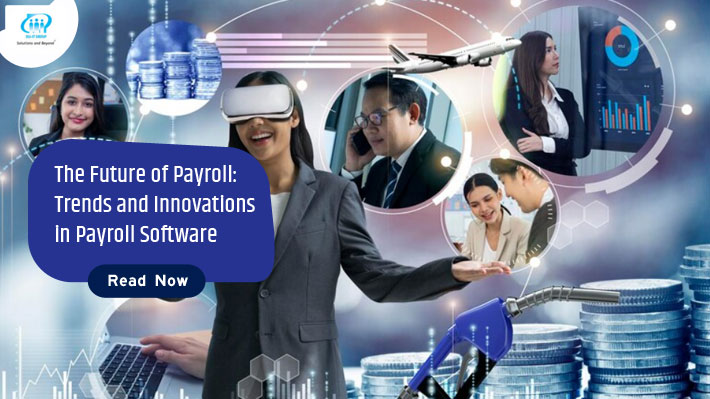Explore key innovations in payroll software, including cloud-based systems, data analytics, compliance management, and employee self-service. Learn how these trends are shaping the future of payroll management software in Dubai, UAE and the Middle East.
Payroll management is one of the critical and yet growing challenging core business operations, mainly because of the rising trends and complexities in the legal frameworks, advancement in technology, and employees’ expectations. There is a problem, though, which is that new trends and innovations are coming up in the market to fit new changes in the market and payroll software to fit new changes that will favour the employer and employees.
This article also aims to detect the most important trends that will determine further development of the HR and payroll system.
Transition to Cloud-Based Systems
The other area that is experiencing change is the implementation of cloud or software as a service (SaaS) based payroll. Earlier it was common to have on-premise payroll software, often with additional requirements of server hosting and hardware management. Cloud payroll systems are, therefore, internet-based, allowing organisations to run and access payroll via the internet using browsers or mobile applications.
Key benefits of cloud-based payroll include:
- Automatic software updates
- Improved security
- Control and teleoperation
- In some cases, it has relatively lower costs in the initial stage.
This feature is important because it can meet the business’s current capacity and also provide for scaling up or down depending on the needs of the business at a certain time of the year.
Data Integration and Analytics
Modern payroll software can integrate with other human resources platforms for benefits, time and attendance and talent management systems due to the enhanced integration options. It results in the establishment of a centralised human resources database which allows for improved analysis of compensation, turnover and overtime rates and so on.
A few of the payroll tools that are currently in use are utilising artificial intelligence and machine learning to process the data collected and offer proactive recommendations. For instance, tracking of employees at risk of resignation due to their salary package and attendance status. Increased analytical capabilities lead to the enhancement of strategic staffing management.
Compliance Management
It is easy to get lost in payroll compliance since there are constant changes regarding the minimum wages and family leave laws. To keep companies on track, payroll software employs compliance calendars combined with alerts that help remind the company of the due dates and regulations.
Some solutions consist of databases that are exclusive and are updated in real-time. Some allow for seamless communication with third-party filing programs. These features give confidence to businesses and, at the same time, minimise the risks in compliance as well as minimise the manual work.
Enhanced Employee Experience
The payroll needs of the employees also change, and today, they want easy and quick freedom to update their preferences regarding payroll. With the help of contemporary technologies, staff can access and update the payroll data, establish and modify the direct deposits, and receive notifications about their payments and time-off requests.
Payroll self-service empowers employees and provides them with accessibility and clear access to their pay details. Companies improve expertise and participation whilst reducing the burden on HR.
Customization and Configuration
When it comes to the basic functionalities of the core payroll, the options offered do not differ significantly, though the level of customisation possible does. Such features, including custom fields, numerous allowable earning/allowable deduction categories, and flexible processes, help organisations adapt to payroll software solutions to fit their particular policies, compensation structures, and operations.
Another advantage of no-code configuration tools is that it allows even non-professional workers, such as administrators to develop unique rules and efficient processes on their own without contacting the IT department. It is important to have this agility and flexibility regarding needs in a business as they may change.
APIs and Third-Party Integrations
This is so because Payroll is no longer an independent function on its own. Mobile technologies are integrated into the everyday practices of employees with time clocks, budgeting apps, HR service platforms and other solutions. Today, these mundane technologies are connected in the modern payroll software and HRMS using open APIs that allow for seamless data exchange.
Integration with other applications may be done more easily if the software in question has pre-built integrations with other frequently used applications. These are specifics of various organisations that custom integrations can effectively manage.
The Final Note
Of course, contemporary platforms assist organisations in addressing regulation growth and offering the necessary and expected experience workers in the 21st-century need. Although the core elements and functions of a payroll remain relatively set, the best solutions provide the advanced capabilities and connections today’s businesses need to excel now and in the future.
